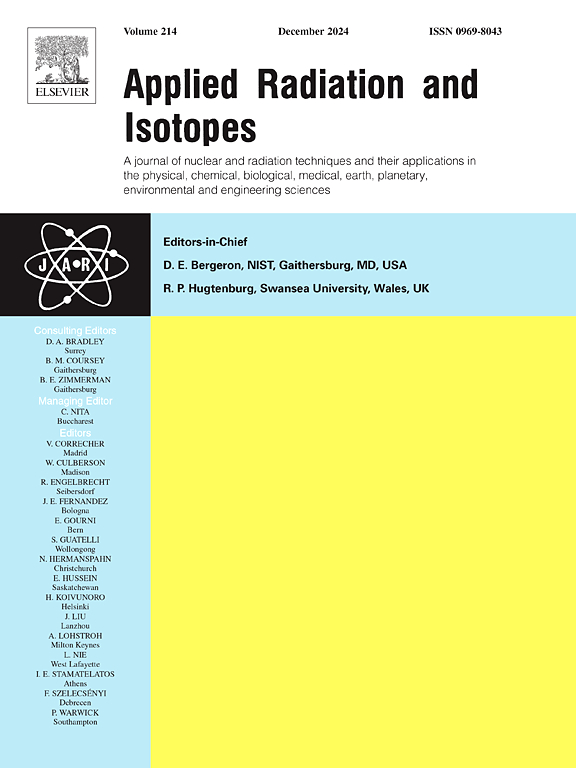A conceptual design of a micro-propulsion device based on alpha particles
IF 1.6
3区 工程技术
Q3 CHEMISTRY, INORGANIC & NUCLEAR
引用次数: 0
Abstract
Nuclear Power Sources (NPS) have become a vital propulsion technology for various space missions, such as those in Earth orbit and on lunar and planetary surfaces. Their key features include long lifespan, autonomy, and high energy density. Alpha particle micro-propulsion, a combination of NPS and micro-propulsion, leverages the recoil from alpha decay for thrust, offering high energy density and specific impulse with a straightforward and controllable design. This technology is ideal for missions demanding precision and longevity, such as scientific exploration and satellite navigation. Previous studies have calculated the thrust generated by Pu-238 and Po-210, but have not addressed the temperature distribution across the thin films and substrates, nor have they compared the comprehensive performance of different nuclides. This research investigates the performance of different alpha-decaying films like Pu-238, Am-241 and Po-210 on various substrates such as graphene, polyethylene, and so on, focusing on thrust, energy deposition, and heat transfer, with CERN's Geant4 Monte Carlo simulation, and also employs ANSYS's Fluent program and a simplified uniform temperature model to calculate the temperature distribution of the films and substrates. Results indicate that thinner films correspond to lower temperatures, higher escape rates, and an increased specific impulse, with film shape having no impact on thrust. Notably, the Pu-238 decay sail could reduce the travel time for a 401-au journey from 111.9 years to 96.3 years. The simplicity, high specific impulse, and modular construction of alpha particle micro-propulsion devices make them well-suited for precise, long-duration missions. Future research will explore thrust-atmospheric drag equilibrium for low Earth orbit satellites.
求助全文
约1分钟内获得全文
求助全文
来源期刊

Applied Radiation and Isotopes
工程技术-核科学技术
CiteScore
3.00
自引率
12.50%
发文量
406
审稿时长
13.5 months
期刊介绍:
Applied Radiation and Isotopes provides a high quality medium for the publication of substantial, original and scientific and technological papers on the development and peaceful application of nuclear, radiation and radionuclide techniques in chemistry, physics, biochemistry, biology, medicine, security, engineering and in the earth, planetary and environmental sciences, all including dosimetry. Nuclear techniques are defined in the broadest sense and both experimental and theoretical papers are welcome. They include the development and use of α- and β-particles, X-rays and γ-rays, neutrons and other nuclear particles and radiations from all sources, including radionuclides, synchrotron sources, cyclotrons and reactors and from the natural environment.
The journal aims to publish papers with significance to an international audience, containing substantial novelty and scientific impact. The Editors reserve the rights to reject, with or without external review, papers that do not meet these criteria.
Papers dealing with radiation processing, i.e., where radiation is used to bring about a biological, chemical or physical change in a material, should be directed to our sister journal Radiation Physics and Chemistry.
 求助内容:
求助内容: 应助结果提醒方式:
应助结果提醒方式:


